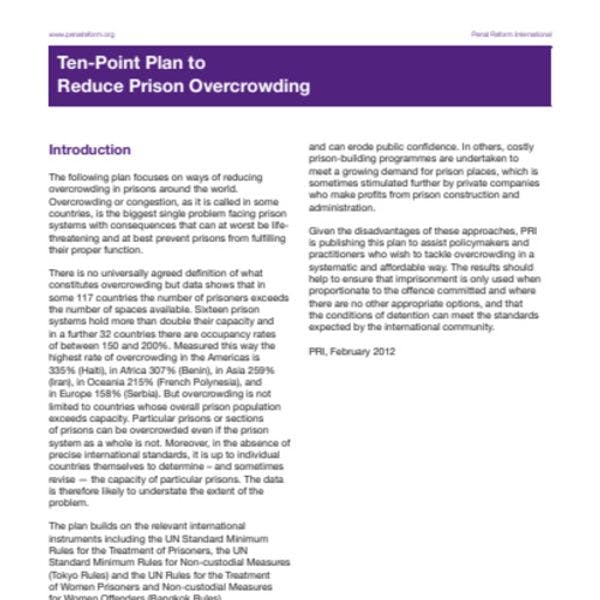10-Point plan to address prison overcrowding
The following plan focuses on ways of reducing overcrowding in prisons around the world.
The plan builds on the relevant international instruments including the UN Standard Minimum Rules for the Treatment of Prisoners, the UN Standard Minimum Rules for Non-custodial Measures (Tokyo Rules) and the UN Rules for the Treatment of Women Prisoners and Non-custodial Measures for Women Offenders (Bangkok Rules).
Penal Reform International (PRI) believes that a prison system that meets international standards is essential for the proper administration of criminal justice. Particular attention should be given to vulnerable groups who are often additionally adversely affected by the negative effects of overcrowding. Women prisoners and children deprived of their liberty are a small percentage of a country’s total prison population meaning that their specific needs tend to remain unacknowledged and unmet, which is exacerbated in overcrowded and overstretched prison systems. In some countries chronic overcrowding is relieved only by the use of periodic amnesties and pardons which, while producing short-term relief, do not provide a sustainable solution and can erode public confidence. In others, costly prison-building programmes are undertaken to meet a growing demand for prison places, which is sometimes stimulated further by private companies who make profits from prison construction and administration.
Given the disadvantages of these approaches, PRI is publishing this plan to assist policymakers and practitioners who wish to tackle overcrowding in a systematic and affordable way. The results should help to ensure that imprisonment is only used when proportionate to the offence committed and where there are no other appropriate options, and that the conditions of detention can meet the standards expected by the international community.
1. Collect and use data to inform a rational, humane and cost-effective use of prison
2. Review and reform the criminal justice process as a whole from arrest to release and invest in crime prevention and reduction
3. Divert minor cases out of the criminal justice system
4. Improve access to justice and case management during pre-trial detention
5. Develop and implement constructive non-custodial measures and sentences
6. Make special arrangements for children and young offenders
7. Consider alternative arrangements for parents with dependent children, particularly mothers with babies
8. Identify mental illness and drug addiction and divert those affected to appropriate medical or other care
9. Reduce sentence lengths and ensure consistent sentencing practice
10. Develop opportunities for parole or other forms of early release and assist prisoners on release to prevent their return to prison
Keep up-to-date with drug policy developments by subscribing to the IDPC Monthly Alert.
